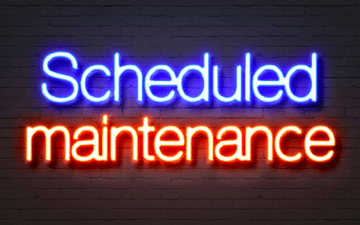Microsoft Office is one of the most commonly used software suite solutions in the world. Multiple departments of every business enlist Microsoft Office every day to complete various tasks. The suite consists of robust tools that can handle a lot of the average organizations’ needs.
The popularity of the Microsoft Office suite does not mean it is suitable for every task an organization comes across, however. Despite this, many maintenance organizations utilize tools like Microsoft Excel for various maintenance tasks including scheduling and asset tracking.
Often Microsoft Excel is used by force of habit without any real consideration into the benefits or costs it offers compared to other solutions. Here are three ways that using Excel to manage your maintenance scheduling and tasks can cost your business.
1. Excel Is Not Real-time or Connected to Your Systems
As we discussed in our previous blog, real-time asset data is extremely important for the success of a maintenance organization. It gives maintenance teams the ability to more proactively prevent costly unplanned downtime, as well as optimize their processes.
When maintenance teams are using Excel or similar spreadsheet software to monitor their asset health, schedule their work orders and analyze their maintenance practices, they are working with data that is not real-time. The fact that spreadsheets aren’t connected can lead to siloed information, especially if they are being emailed around for updates.
Siloed information can be extremely disruptive and detrimental to a maintenance organization. Not only are you potentially missing key asset health information which could prevent unplanned downtime, but you are also at risk of losing critical asset information. Relying on a platform that doesn’t seamlessly connect with all your other tools makes it almost impossible to create a single source of asset information. Furthermore, showing work order progression based on a spreadsheet is time-consuming and complicated.
There is also the added administrative pain to using a system or tool that is not connected and real-time. Valuable time is often wasted trying to keep the spreadsheets up to date. It is difficult to keep your asset data in sync as there is no audit trail and often more than one person has access to the file.
The standalone nature of spreadsheet software, like Excel, makes it especially challenging to report on work once it is completed. Missing and/or inaccurate information impacts roll-up reports, status updates and your maintenance team’s overall ability informed decisions about your maintenance practices.
2. Excel Does Not Allow You to View Availability Quickly and Accurately
The ability to act quickly is imperative to the success of a maintenance program and is often one of the top differentiators of high-performing maintenance teams. All too often, however, spreadsheets, like Excel, slow people down and hurt their accuracy by requiring individuals to manually perform repetitive tasks, like populating fields, that could be streamlined and/or automated with better software.
Even more importantly, spreadsheets like Excel are ripe with opportunities for errors from version controls, human error when manually entering data, copy-paste errors, and entry over-writes. Accuracy is difficult and the increased likelihood of data errors is almost inevitable with large quantities of asset information. Excel doesn’t allow users to easily validate their data and it can be challenging to spot and correct errors.
The data housed within these Excel sheets often needs to be shared amongst a team. However, it is harder to collaborate with spreadsheets within and between departments. Users have to be diligent about version codes and sharing when changes have been made. Additionally, there are restrictions on how many users can simultaneously make changes in real-time. If someone saves over your work, it can be difficult to retrieve.
3. Excel Makes it Hard to Maintain Compliance and Accountability
Compliance is critical in asset maintenance. Certain assets will have required inspection or work time for their warranties, or to maintain peek functionality. Compliance for assets varies, however. For example, one asset might need to be inspected once a year, while another one needs to be inspected every 6 months and another needs to be inspected every week. With spreadsheets, things can slip through the cracks and compliance can be hard to maintain.
Excel and other similar spreadsheet software also create a challenge with accountability. Part of the reason so many errors occur, and they are so difficult to use is because spreadsheets lack an inherent way to identify and track changes. For example, it is almost impossible to tell who modified what information and when especially when track changes functionality can be turned on and off as easily as one pleases.
Use a Maintenance System That Seamlessly Integrates With Your ERP
Digitalizing your maintenance processes with a system that is connected with your ERP or EAM system is the easiest way to ensure you are not making mistakes and missing critical details.
Solutions like the Prometheus Platform are designed to prevent issues like those listed above by supporting your maintenance team through the entire work management process. From identifying the issues to planning and scheduling, executing, completing and analyzing, the Prometheus Platform has a product to meet all your needs.
To learn more about how the Prometheus Platform help your company, contact us today.



